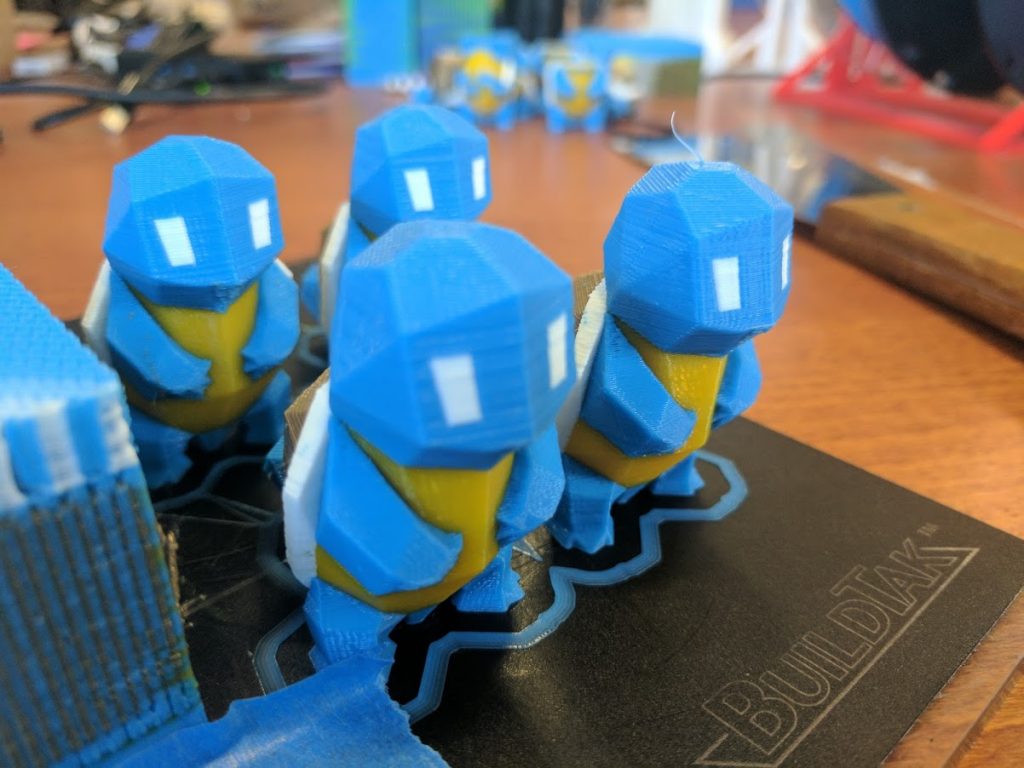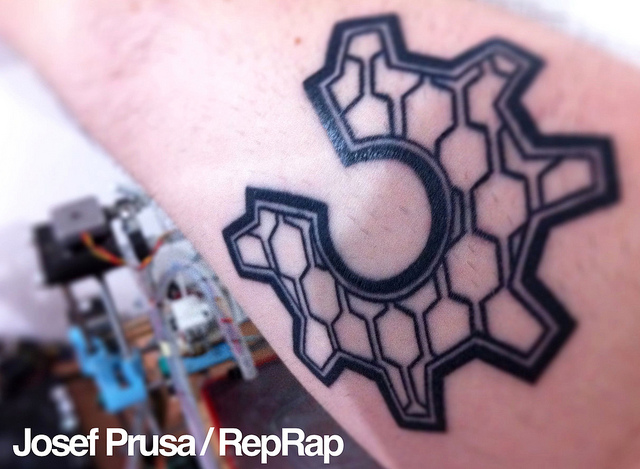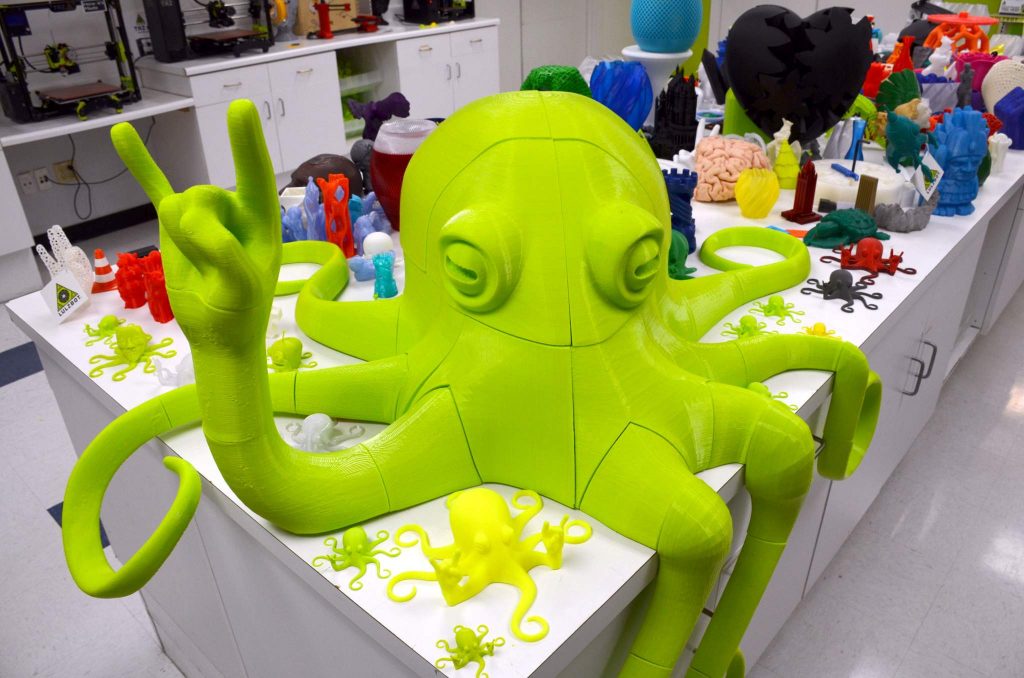As previously reported, Ultimaker has filed the first patent application for Active Bed leveling in the Ultimaker 3. The company told 3D Printing Industry that the news was well received by the Ultimaker community and that “people are very understanding.”
A review of the comments on the Ultimaker forum in the main support this perspective, while also raising a few concerns. 3D Printing Industry spoke with experts in the 3D printing community for their opinion on this development.
A 3D designers perspective
Flowalistik is probably most well known for his incredibly popular low-poly versions of iconic gaming and sci-fi characters.

Writing on the Ultimaker forum Flowalistik says, “As a designer whose 3D models have been stolen and sold for years, I understand Ultimaker. Even more considering the amount of effort and money they’ve put into their 3D printers.” He adds,
Also, I saw it coming since the day I got my Ultimaker 3. The difference between the UM2 and UM3 is much bigger than it may look, at least for me. Yes, this is a superficial point of view, but I see a big difference in terms of design and product refinement between my first Prusa i3 (which is still working) compared to an UM3.
This said, I don’t like patents, they’re evil, they turn you into a Sith. I trust Ultimaker, and I hope that any step they take towards the dark side is just to avoid potential problems. Please Ultimaker, don’t mess everything up. You’ve got enough examples of what NOT to do just in the 3D printing industry.
3D printing history repeating?
One of these examples on the mind of Flowalistik, and others, is likely the 2012 decision by MakerBot to make the Replicator 2 3D printer and Makerware 3D printing software closed source. At the time of that decision Zachary Smith, who founded Makerbot in 2009 with Adam Mayer and Bre Pettis, wrote,
I do not support any move that restricts the open nature of the MakerBot hardware, electronics, software, firmware, or other open projects. MakerBot was built on a foundation of open hardware projects such as RepRap and Arduino, as well as using many open software projects for development of our own software. I remain a staunch supporter of the open source movement, and I believe the ideals and goals of OSHW remain true.
I have never wavered from this stance, and I hope that I never do. Future me, beware.
Josef Průša’s perspective
Another leading figure in the Open Hardware scene, and the CEO and founder of Prusa Research Josef Průša also writing in 2012, gave his reaction to the decision. As the frequent recipient of accolades and with Prusa 3D printers enjoying solid support from a sizable user base, 3D Printing Industry asked Josef Průša for his reaction to Ultimaker’s patent applications. He told us,
It does not come as a surprise, Ultimaker always used a CC NC license and this is just another step. Maybe they will end up sharing the patent with others as Tesla does, that would be a great outcome but I highly doubt it with NC license.
From my point of view patents just consume time and make a product development slower and we never felt the need to have one. But if we ever end up applying for one, we would pledge to allow anyone with truly (without the non commercial clause) open source product use it.

A view on IP from an industrial additive manufacturer
The view that patents, “consume time and make a product development slower” is not just one seen in the FFF 3D printing community.
During a conversation with Emeric d’Arcimoles, CEO of industrial additive machine manufacturer BeAM, at Frankfurt’s 2016 Formnext I heard a similar perspective from the CEO and other key BeAM partners.
BeAM make a range of industrial 3D printers that can be used to 3D print parts in metal, using Laser Metal Deposition (LMD) technology. BeAM technology has manufactured over 1,000 class 1 aerospace parts now flying in service. With it’s incredibly lengthy development cycles, the multi-billion aerospace industry is perhaps the last place you would expect to find an ardent advocate of the freedom that not focusing on Intellectual Property (IP) brings.
During our conversation the BeAM CEO tells me,
You know the lead time to put a process under patent is so long, 5 or 6 years and you can spend a lot of money to have a patent on a technology that is obsolete. I think the best way to invest your money, is not into patents but into processes. You have to put your money into the next thing to maintain innovation and position.
This is a very new approach for a new generation of engineers.

A chilling effect on innovation
3D Printing Industry also spoke to Aleph Objects, the makers of the Lulzbot range of 3D printers and vocal advocates for Open Source. Ben Malouf, Director of Marketing, told me “We respect Ultimaker and their contributions to Open Source software.” He adds,
At Aleph Objects, we are committed to respecting user freedom. We believe the desktop 3D printing industry owes its existence to collaboration.
Sharing fuels innovation, and we think the most successful companies will continue to be those that work collaboratively with the global 3D printing community. We are not pursuing patents and believe they have a chilling effect on innovation.
A chilling effect is, “the inhibition or discouragement of the legitimate exercise of natural and legal rights by the threat of legal sanction.” This is an area where much work is conducted by lawyers active in the 3D printing industry, as this in depth article reviews.

Ben Malouf continues to expand on the position of Aleph Objects saying,
Both LulzBot TAZ and Mini 3D printers are Respects Your Freedom (RYF) Certified by the Free Software Foundation, and Certified Open Source Hardware by the Open Source Hardware Association. To my knowledge, we are the only 3D printer company that has either certification to date.
Licenses that prevent commercial use (known as non-commercial or -NC) are not Open Source Hardware, per the definition: https://www.oshwa.org/definition/
The most widespread 3D printers in the world respect user freedom, including allowing commercial use, such as the Prusa i3 made by Prusa Research. Early RepRap developers recognized the importance of allowing commercial use, following in the footsteps of massively influential projects such as Wikipedia and the Linux kernel.
The Ultimaker patent application NL2015361 is not only an interesting step on the journey of the company, but also in the unfolding history of 3D printing. At 3D Printing Industry, we’ll continue to bring not only all the latest news about developments in our industry, but also the context behind the news.
Subscribe to our newsletter and follow our active social media channels to stay up to date. Also, let us know your thoughts in the comments section below.
Featured image shows the Ultimaker 3. Photo by Michael Petch



